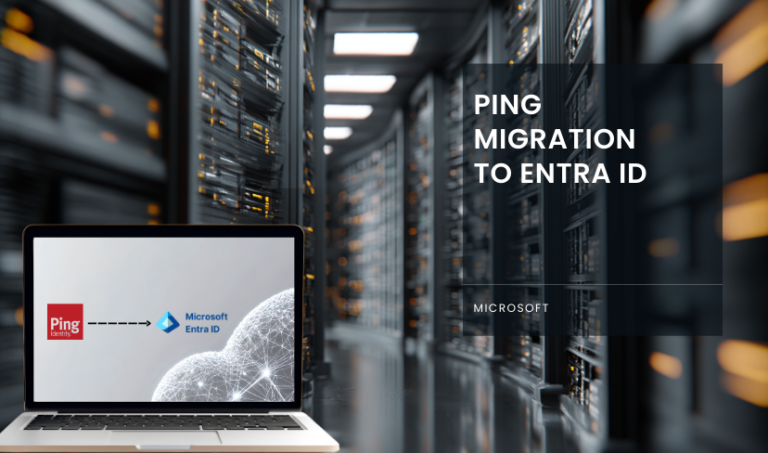Written by MSP SPECIALIST | TRANSPUTEC
Imagine missing out on new opportunities because your software takes longer to deploy than your competitor’s or facing frustrated teams who waste hours trying to fix operational bottlenecks with outdated tools. Common business obstacles like software delivery delays, costly outages, and miscommunication between developers and IT teams stem from siloed working methods. These problems aren’t just technical they hurt revenue, customer trust, and employee morale. For fast-growing companies, the real solution is Cloud DevOps: a fusion of technical practices and agile cloud infrastructure designed to drive speed, quality, and security.
This blog explores Cloud DevOps in real depth, including technical implementation, benefits for business, empirical research, and how Transputec turns theory into measurable outcomes for clients.
What is Cloud DevOps?
Cloud DevOps is a strategic approach combining DevOps best practices—collaboration, automation, continuous delivery—with the scalability and flexibility of cloud platforms (like AWS, Azure, or Google Cloud). DevOps champions rapid, reliable software delivery by breaking down boundaries between development and operations, and automating repetitive tasks. When married to the cloud’s on-demand resources, Cloud DevOps transforms not just how IT teams work, but how businesses compete and innovate.
Research shows DevOps teams deploying on cloud can deliver more frequently, with incident recovery improvements exceeding 6,500%, compared to legacy shops relying on manual, fragmented processes.
Cloud DevOps: Key Components for Success
Cloud DevOps: Technical Foundations
Cloud Infrastructure: Platforms like AWS, Azure, and Google Cloud provide scalable compute, storage, and networking. Infrastructure can grow or shrink overnight, matching exactly what applications need and optimising cost.
Continuous Integration/Continuous Delivery (CI/CD): Automated pipelines (using Jenkins, GitLab CI, Azure DevOps, Cloud Build) manage the entire code journey, from commit, through automated building and testing, to deployment in production. This slashes lead times and minimises human error.
Infrastructure as Code (IaC): Tools like Terraform, AWS CloudFormation, Ansible, and Pulumi provision and configure cloud resources using code templates. This ensures secure, repeatable, error-free infrastructure deployments with version control and auditability.
Containerisation & Orchestration: Docker, Kubernetes, and similar technologies encapsulate applications for portability and horizontal scaling. Kubernetes automates resource management across nodes for cost-effective performance.
Monitoring & Feedback: Platforms such as Grafana, Datadog, and Azure Monitor provide real-time system metrics, logs, and alerts. Automated monitoring enables proactive fixes, continual improvement, and uptime guarantees.
Start Your Cloud DevOps Transformation with Transputec
Connect with us today for our free consultation!
Cloud DevOps: How DevOps and Cloud Work Together
Cloud DevOps synchronises teams and technologies around shared business goals. Here’s how the two disciplines unite for success:
Collaboration: DevOps dissolves walls between developers, operations, and security. With shared cloud tools, everyone sees and solves problems in real time.
Automation: Every repetitive task—from infrastructure provisioning to deployment—is automated, turning manual labor into swift, error-free processes. Automated CI/CD pipelines mean new code can be safely released dozens of times per day.
Agility: Cloud infrastructure adapts instantly to new business demands. Launching a new service? Add resources in seconds, or roll back with a click.
Security and Compliance: DevOps in the cloud combines automated security checks, real-time alerting, and regulatory frameworks like GDPR and ISO 27001. Cloud-native services automate compliance and transform vulnerability management into a seamless process.
Resilience: Smart monitoring, rapid rollback tools, and self-healing cloud environments mean issues are resolved before customers notice. Automated incident recovery delivers robust uptime and business continuity.
Step-by-Step Cloud DevOps Implementation: A Real Guide
1. Assessment & Goal Setting: Begin with a thorough analysis of your existing tech stack, business goals, and operational constraints. Transputec helps leaders define a transformation roadmap tailored to real-world needs.
2. DevOps Strategy & Team Formation: Assemble cross-functional teams responsible for architecture, dev, ops, QA, and security. Assign DevOps engineers to design, build, and manage CI/CD pipelines and IaC templates.
3. Cloud Platform Selection: Evaluate AWS, Azure, GCP, or hybrid options, considering application workloads, compliance, and integration requirements.
4. Toolchain Build-out:
- CI/CD: Jenkins, GitLab, Azure DevOps, Google Cloud Build for automated delivery.
- IaC: Terraform, Ansible, AWS CloudFormation for infrastructure automation.
- Containerisation: Docker and Kubernetes for portability and scalability.
- Monitoring: Datadog, Grafana, New Relic for real-time visibility.
5. Automation First: Automate software builds, testing, deployment, scaling, and recovery. Eliminate manual bottlenecks to save time and reduce error rates.
6. Continuous Feedback & Improvement: Real-time monitoring, incident management, continuous feedback from business stakeholders, and ongoing platform improvements.
7. Security Integration: From code scanning to cloud-native firewalls and policy enforcement automate security throughout the delivery cycle
Business Results: What Cloud DevOps Delivers
1. Speed and Efficiency: Automating builds, tests, and deployments shrinks software release cycles from weeks to hours, getting products to market first and keeping clients ahead.
2. Cost Optimisation: Pay only for used resources, avoiding expensive idle infrastructure. Automation slashes IT labor costs and downtime expenditures.
3. Quality and Reliability: Continuous integration, automated testing, and container orchestration ensure robust, bug-free products.
4. Scalability and Growth: Dynamic cloud resources support rapid growth—whether it’s customer spikes, new app launches, or global expansion.
5. Security and Compliance: DevOps automation secures code and infrastructure against breaches enforcing compliance via integrated audit and monitoring tools.
Overcoming Real-World Challenges with Cloud DevOps
How Cloud DevOps Solves the Toughest IT Problems
Complex Pipeline Management: Legacy tools require manual intervention and troubleshooting. Modern CI/CD platforms replace error-prone handoffs with seamless, automated workflows.
Siloed Teams: Dev, Ops, and QA often work separately, causing costly miscommunication. Cloud DevOps, supported by shared dashboards and automated alerts, brings everyone to one table for instant, actionable collaboration.
Repetitive Infrastructure Tasks: Cloud DevOps uses Infrastructure as Code—provisioning hundreds of environments nightly with one script, rather than hours of manual work.
Security Risks: Manual checks leave gaps; Cloud DevOps automates compliance and vulnerability management, stopping threats before they reach production.
Conclusion
Cloud DevOps is now the essential engine for modern business success. Organisations that master the integration of DevOps principles and cloud technology gain unrivalled speed, scalability, reliability, and security. Transputec’s proven approach accelerates time-to-market, eliminates operational friction, and turns IT challenges into business growth drivers. From strategic planning to technical implementation, ongoing support, and AI-powered analytics, Transputec’s Cloud DevOps experts deliver genuine transformation tailored, measurable, and ready for tomorrow’s opportunities.
Contact us today to connect with a Cloud DevOps expert at Transputec and get started on your journey.

Secure Your Cloud, Secure Your Future. Ready to Take the Next Step?
Contact us today to schedule a consultation with our experts.
FAQs
How does Transputec’s Cloud DevOps solution stand out?
Transputec delivers end-to-end DevOps automation on cloud, custom-tailored for each client’s needs, with continuous improvement and hands-on mentoring for high-impact results.
How do CI/CD and IaC work together in Cloud DevOps?
CI/CD pipelines automate application delivery, while IaC ensures cloud resources are provisioned identically and securely every time, removing manual overhead.
How does Transputec support hybrid and multi-cloud setups?
Transputec architects seamless integration across AWS, Azure, and on-premises, enabling agile resource scaling and workflow automation no matter the platform.
How does Transputec handle DevOps security and compliance?
Transputec deploys automated security tools for code and infrastructure scanning, aligns workflows with international standards, and provides real-time audit and compliance reporting.




